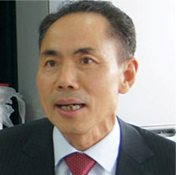by Saifulbahri Ismail 05:55 AM Jul 17, 2010
SINGAPORE - Money-laundering activities have yet to be detected in the country's two casinos, according to the authorities.
Casinos are a cash-intensive business with a high volume of daily transactions - making them vulnerable to money-laundering risks.
That is why the Casino Regulatory Authority was established two years before the casinos opened in Singapore.
Mr Ong Hian Sun, director of the Commercial Affairs Department of the Singapore Police Force, pointed out that Singapore has put in place measures that are necessary to prevent money from being illegally siphoned in and out of the country.
"What we have in place is ... that every transaction above $10,000 in the casino - they have to be reported and we are collecting all this information," he told a news conference on Friday at the end of the 13th Annual Meeting of the Asia-Pacific Group (APG) on money laundering. Mr Ong is the APG's co-chair.
"So, if you talk about money laundering in the casinos, they are actually very well regulated, it's not so easy to launder the money. If anything, people will try to perhaps get around this $10,000 threshold," he said.
Singapore has also received recognition for the standards put in place. A 2008 report by the Financial Action Task Force, an inter-governmental body which develops policies on money laundering and terrorists financing, noted that Singapore scored 43 out of its 49 compliant ratings.
APG's executive secretary, Dr Gordon Hook, said on Friday: "We were very impressed with the supervisory and regulatory framework that was established prior to the casinos being opened. So, I think Singapore can be commended for the very tight regulatory frame."
The casino at Resorts World Sentosa opened in February and the Marina Bay Sands casino started operations three months ago. APG said money laundering in casinos is a critical issue due to the high number of casinos in the region.
But the threat goes beyond casinos. During the week-long meeting, APG also discussed methods and trends on money laundering and terrorist financing.
This includes money laundering associated with kidnapping for ransom, charities, carbon emissions trading schemes and human trafficking.












